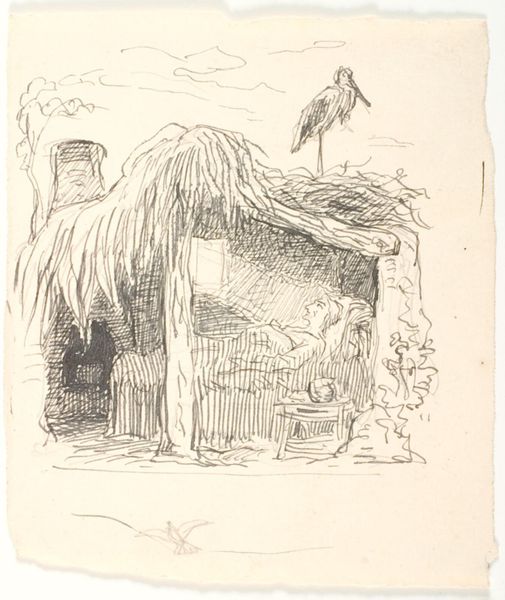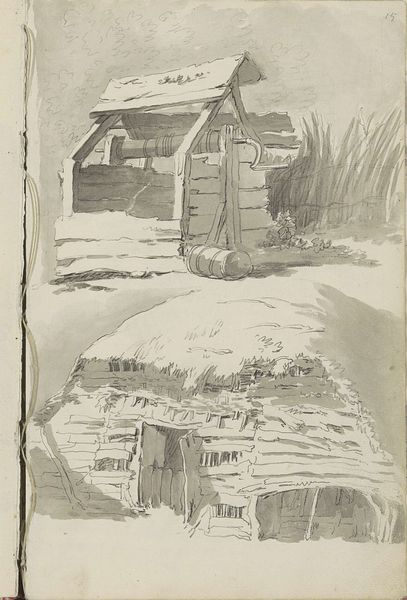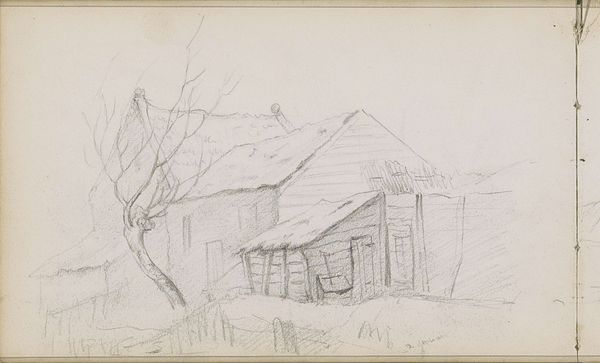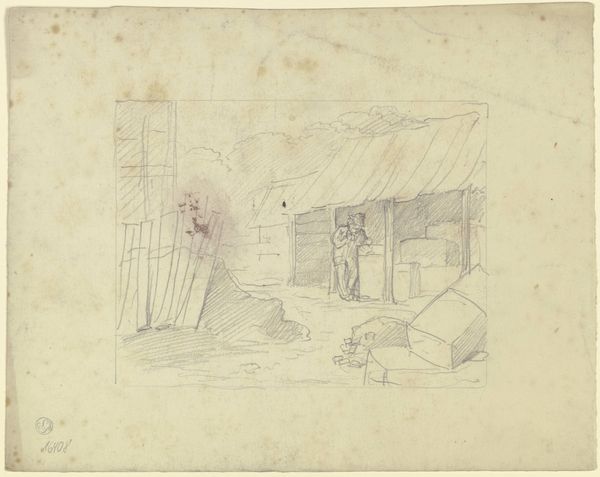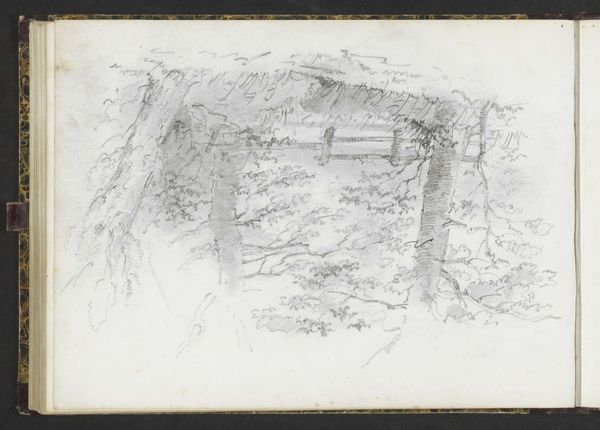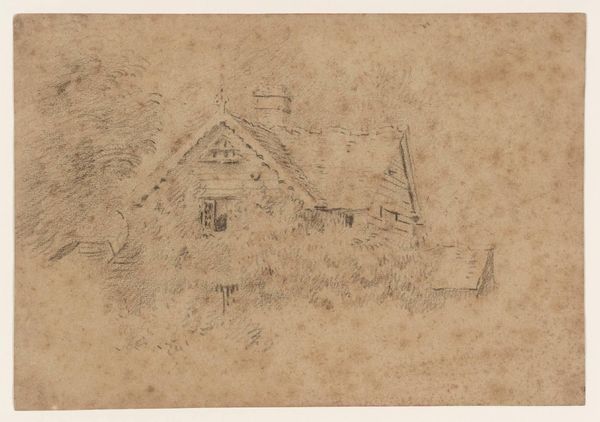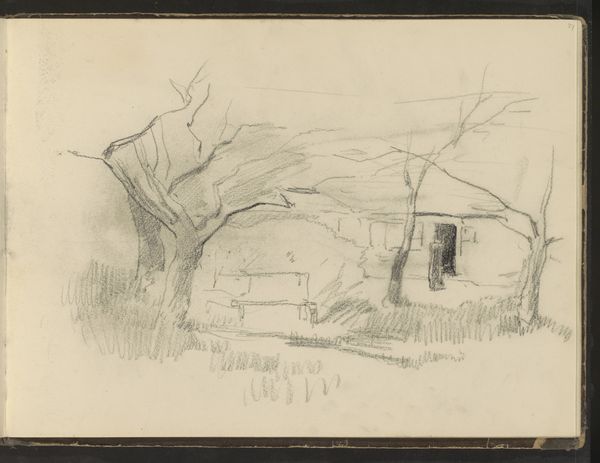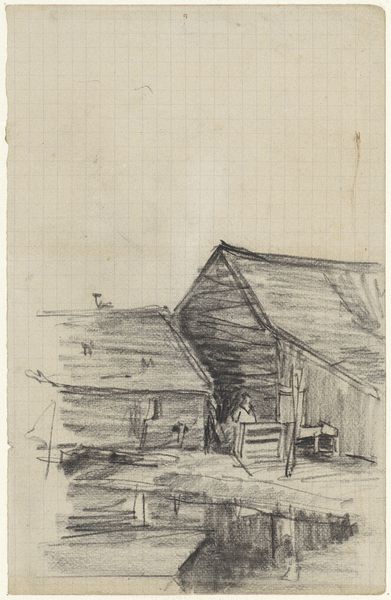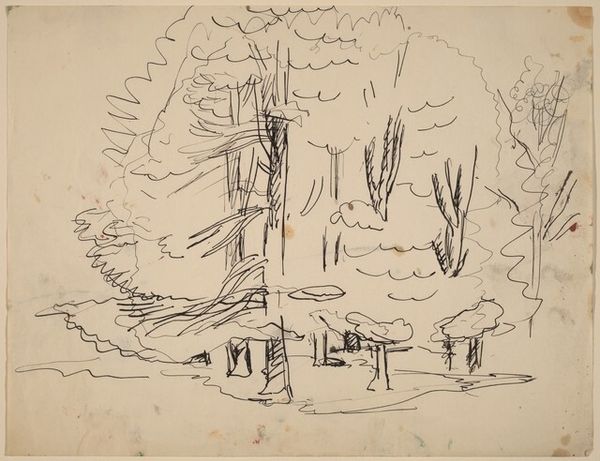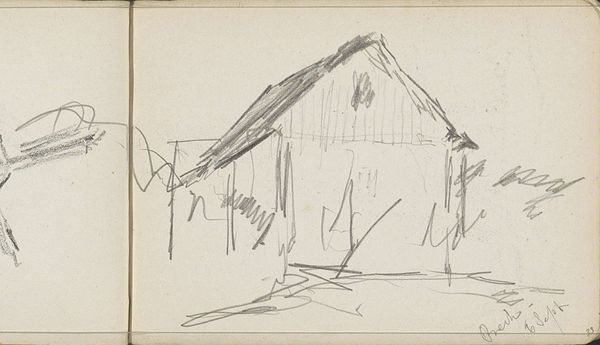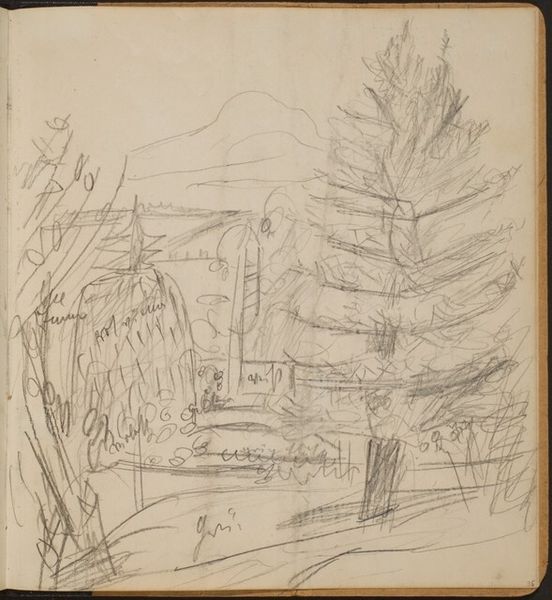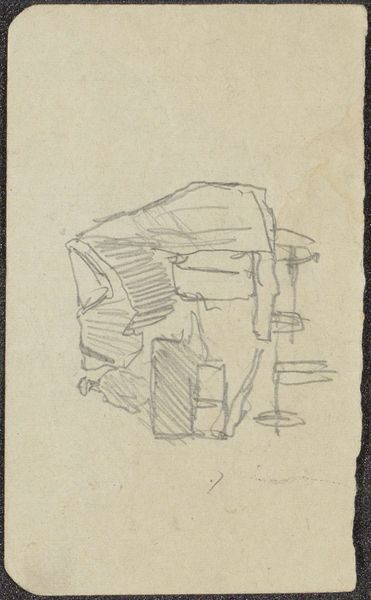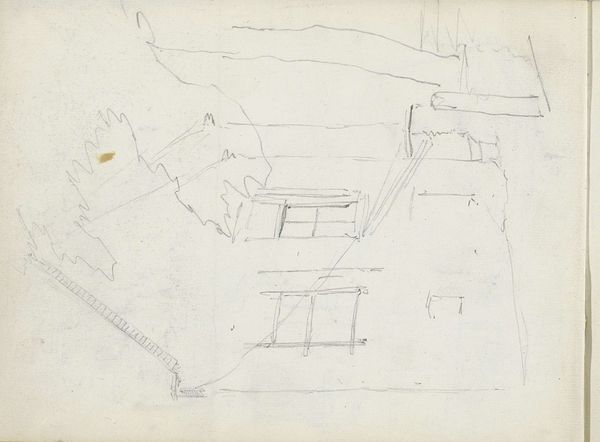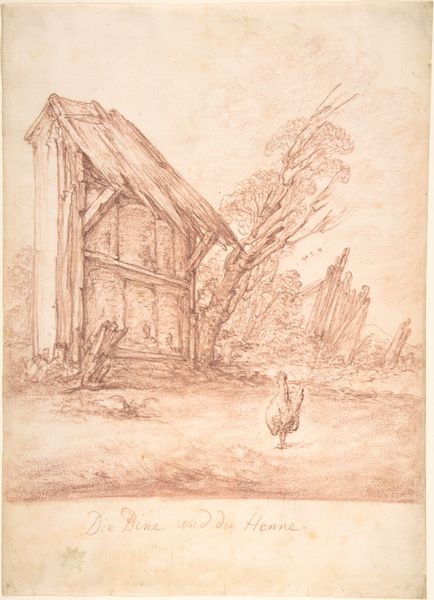
Anna Dorthea på dødslejet. Illustrationsudkast til H.C. Andersen, Vinden fortæller om Valdemar Daae og hans Døtre 1869 - 1870
0:00
0:00
Dimensions: 121 mm (height) x 111 mm (width) (bladmaal)
Curator: This is Lorenz Frølich’s pen and ink drawing, “Anna Dorthea på dødslejet. Illustrationsudkast til H.C. Andersen, Vinden fortæller om Valdemar Daae og hans Døtre,” dating from around 1869-1870. It’s held here at the SMK. What strikes you first about it? Editor: Immediately, a sense of fragility, visually represented by the delicate lines, and the implied story evokes vulnerability. The limited tonal range, being an ink drawing, adds to a sort of solemnity. Curator: I find Frølich's draft compelling because it is more than just a depiction of a deathbed scene, it's a tableau rich with the symbology inherent to Hans Christian Andersen’s narratives. Editor: Indeed, there is that striking figure perched above the dwelling; is that a stork? It has an almost totemic quality overlooking the domestic scene. Curator: Absolutely! The stork, in Andersen's work, often heralds new life or reflects on the passage of time, serving almost as a watchful guardian, or even a harbinger in this context of mortality. It is a symbol interwoven with Danish cultural memory and folklore. Editor: It provides a stark contrast. While the interior speaks of the finality of life, the outside teems with potential and continuation. Did Frølich emphasize this juxtaposition intentionally, you think? Curator: I believe so. Look at how the delicate lines forming Anna Dorthea contrast with the more assertive strokes outlining the stork and the architecture around her. It is a study in contrasts: mortality versus nature's ongoing rhythm, interiority versus the external world. Editor: A successful and evocative tension created using very spare means, particularly evident in his command of line and texture. The romantic impulse certainly palpable here, presenting universal themes in a specific cultural visual vocabulary. Curator: It prompts contemplation on themes of familial duty, societal expectations, and of course, the ever-present dance between life and death depicted in a beautiful and yet melancholic way. Editor: Yes, it does offer us a lens into the visual strategies of storytelling during that period, employing both pathos and cultural symbols in the narrative illustration, doesn't it? Curator: I concur entirely. The piece is both specific to its source material and resonant beyond it, as it delves into these themes with surprising effectiveness, especially considering it's an early sketch.
Comments
No comments
Be the first to comment and join the conversation on the ultimate creative platform.
